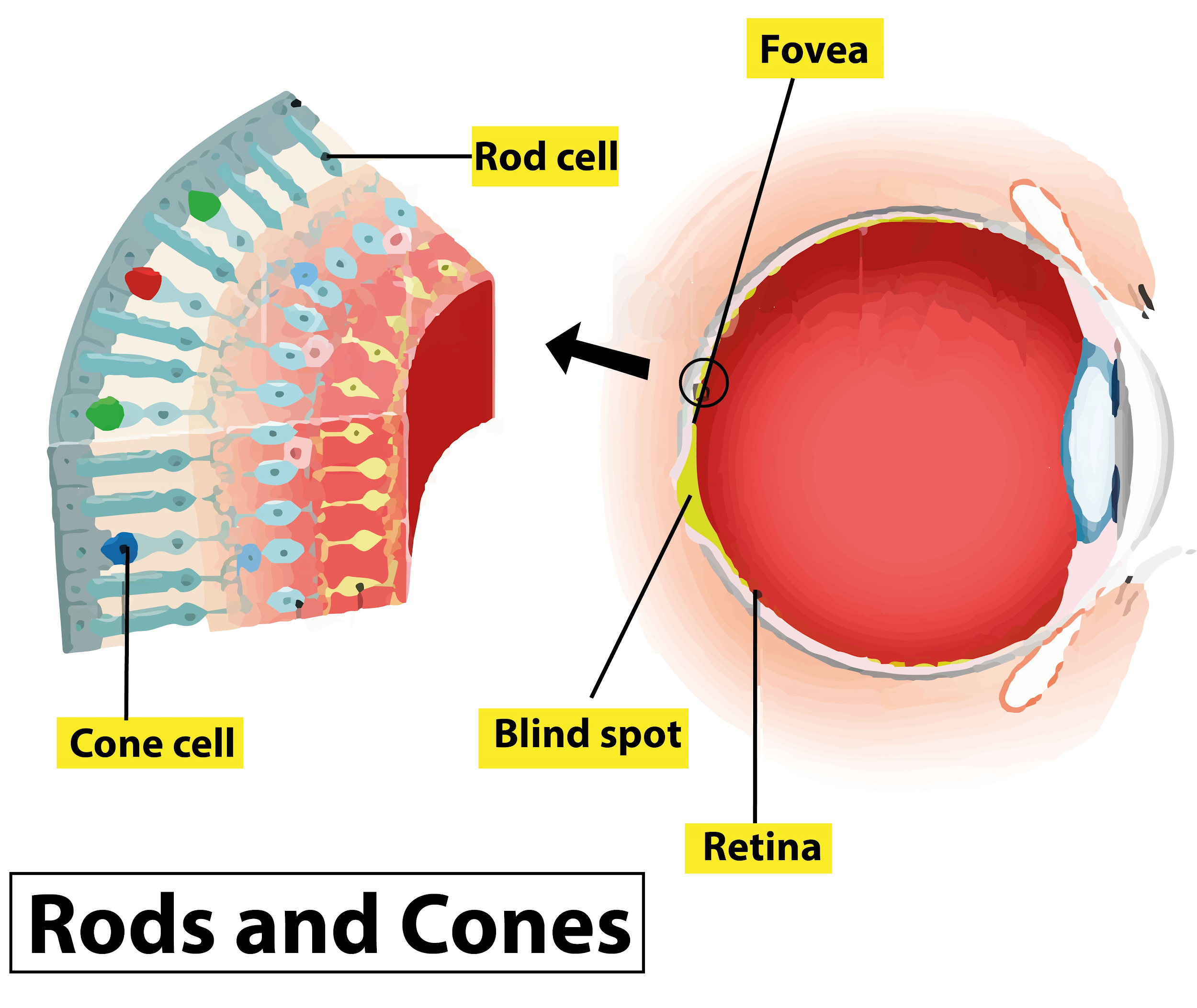
No image is formed in the blind spot of the human eye because
(a) Cones are absent
(b) Rods are absent
(c) Rods and cones are absent
(d) The optic nerve is absent
Answer
488.1k+ views
1 likes
Hint: Rods are used for scotopic vision and cones are used for photopic vision. The optic nerve transmits impulses from rods and cones to the visual cortex of the brain.
Complete step by step answer:
The Photoreceptor layer of the human eye consists of photoreceptor cells called rods and cones. The light ray of visible wavelength passes through the cornea and lens and it is focused on the retina which generates impulses in rods and cones. As a result action potentials are developed and are transmitted by the optic nerve to the brain.

Due to the absence of rods and cones in the blind spot eye, no image is formed at that spot.
So, the correct answer is 'rods and cones absent'.
Additional information:
- The retina of the eye has 3 layers namely the photoreceptor layer, bipolar layer, and ganglion cell layer
- The photoreceptor layer consists of two types of cells namely rods and cones.
- Rods contain a purplish- red color protein called rhodopsin or visual purple which is important for vision under low light conditions (scotopic vision).
- Cones contain a visual pigment called adoption which is important for vision in daylight (photopic vision) .
- Cones having different sensitivity provides an optimal response to red, green, and blue colors.
White color is produced when there is equal stimulation of cones. This is called trichromacy theory.
- The center posterior portion of the retina is called the yellow spot which contains a small depression called fovea Centralis, and it contains only cones.
- Optic nerve exits the retina from the site called blind spot which contains neither rods or cones.
No image is formed at that spot.
Note:
- Blindspot is also known as 'optic disc'.
- The protein present in rods i.e, rhodopsin is formed from 'retinal' which is a light absorbed molecule derived from vitamin A.
Complete step by step answer:
The Photoreceptor layer of the human eye consists of photoreceptor cells called rods and cones. The light ray of visible wavelength passes through the cornea and lens and it is focused on the retina which generates impulses in rods and cones. As a result action potentials are developed and are transmitted by the optic nerve to the brain.

Due to the absence of rods and cones in the blind spot eye, no image is formed at that spot.
So, the correct answer is 'rods and cones absent'.
Additional information:
- The retina of the eye has 3 layers namely the photoreceptor layer, bipolar layer, and ganglion cell layer
- The photoreceptor layer consists of two types of cells namely rods and cones.
- Rods contain a purplish- red color protein called rhodopsin or visual purple which is important for vision under low light conditions (scotopic vision).
- Cones contain a visual pigment called adoption which is important for vision in daylight (photopic vision) .
- Cones having different sensitivity provides an optimal response to red, green, and blue colors.
White color is produced when there is equal stimulation of cones. This is called trichromacy theory.
- The center posterior portion of the retina is called the yellow spot which contains a small depression called fovea Centralis, and it contains only cones.
- Optic nerve exits the retina from the site called blind spot which contains neither rods or cones.
No image is formed at that spot.
Note:
- Blindspot is also known as 'optic disc'.
- The protein present in rods i.e, rhodopsin is formed from 'retinal' which is a light absorbed molecule derived from vitamin A.
Recently Updated Pages
Master Class 11 Economics: Engaging Questions & Answers for Success

Master Class 11 Business Studies: Engaging Questions & Answers for Success

Master Class 11 Accountancy: Engaging Questions & Answers for Success

Master Class 11 English: Engaging Questions & Answers for Success

Master Class 11 Computer Science: Engaging Questions & Answers for Success

Master Class 11 Maths: Engaging Questions & Answers for Success

Trending doubts
State and prove Bernoullis theorem class 11 physics CBSE

What are Quantum numbers Explain the quantum number class 11 chemistry CBSE

Write the differences between monocot plants and dicot class 11 biology CBSE

Why is steel more elastic than rubber class 11 physics CBSE

Explain why a There is no atmosphere on the moon b class 11 physics CBSE

1 ton equals to A 100 kg B 1000 kg C 10 kg D 10000 class 11 physics CBSE




